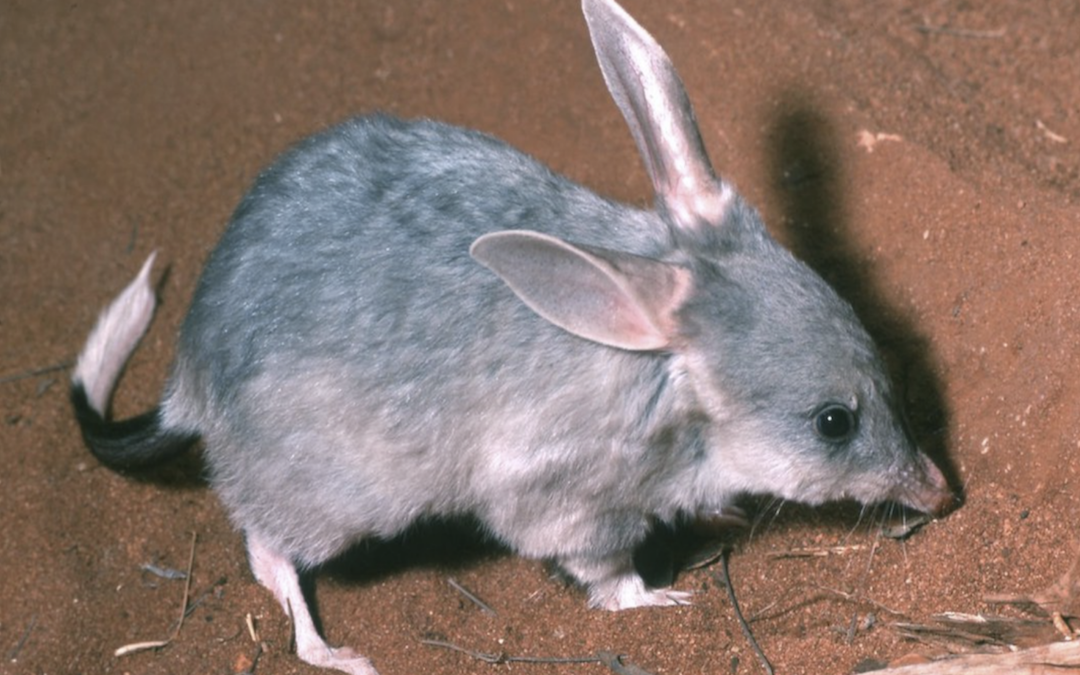Reintroducing bilbies to mild climate zones could be successful, according to a new study.
Researchers working with bilbies at Taronga Western Plains Zoo have discovered that the marsupials could thrive in temperate Australian climates where they once lived more than 100 years ago.
Background on bilbies
Bilbies are threatened native animals currently kept in areas where they can be protected from introduced predators. While this cute marsupial used to live within the temperate zones of southeastern and southwestern Australia, they have not inhabited this area for more than 100 years due to the introduction of invasive species and feral predators such as rabbits, cats and foxes, who have roamed this region since European settlement.

Bilbies are threatened by feral rabbits and other invasive species.
However, bilbies support the development of the ecosystems they inhabit. Co-author of the study and Conservation, Recovery and Restoration Programs Manager at Taronga Conservation Society Australia, Andrew Elphinstone, says they help to maintain the environment.
“Bilbies turn over and aerate the earth which improves soil health,” he explains.
“Understanding the habitat preferences and needs of bilbies is critical to restoring the species to a wider area so that they can have a positive impact over as wide an area as possible.”
According to the Australian Museum, there were originally two species of bilby – The Greater and the Lesser Bilby, but the Lesser Bilby became extinct in the 1950s. Nowadays, bilby populations are found in the Tanami Desert, the Great Sandy Gibson Desert, parts of the Pilbara and Kimberly, and the Mitchell grasslands.
Climate control
As part of a new study, experts from UNSW Sydney and Taronga Conservation Society Australia have used a sanctuary at Taronga Western Plains Zoo in Dubbo to assess the habitat requirements for returning bilbies to mild climate zones.
The study, led by Dr Kate Cornelsen, was published in the journal Animal Behaviour, and focused on the habitat preferences and movement patterns of animals within the Dubbo sanctuary who are being bred for release into the wild.

Greater bilby © Steve Parish
According to Dr Cornelsen, experts are facing a lack of information about what bilbies need to thrive in temperate areas.
“If bilbies are to be restored in the temperate zone where they once thrived, we need to know much more about where they like to go and what they need there,” she explains.
“We fitted tiny GPS tracking devices to the tails of 20 greater bilbies, which recorded where the bilbies were every hour, giving us a unique insight into their nocturnal habits and preferences in this area.”
Findings
According to Dr Cornelsen, the study turned up some fascinating patterns in bilby behaviour.
“Food biomass or availability essentially had a strong influence on where they preferred to hang out,” she says.
“They seemed pretty good at working out where the food was. Interestingly though, they also preferred certain soil types, and females were much pickier in this respect than males.”
Female bilbies care for the young in pouches before placing them in breeding burrows at night so they can go out and forage. Experts noted that the females often looked for soft sandy soil that was easy to dig through and make a home in, as well as silty soil that tended to contain more food.
“What’s interesting about this is that it shows the diversity of soil types bilbies can exploit – they’re not just limited to sandy soils for good burrowing,” says Dr Cornelsen.

© Dave Watts
Due to this parental role, female bilbies seemed to care more about the location and seasonal availability of resources, when compared to male bilbies. However, males who weren’t required to return to breeding burrows often inhabited high-quality feeding areas, where they could feed on invertebrates such as beetles, termites and crickets.
Another major find that surprised researchers was the amount of time that bilbies spend away from water sources, where food is more likely to be available. However, experts believe that temperate zones may support this spread.
According to Dr Cornelsen, “food is probably less patchy and more predictable in this study area compared to the desert where they’ve been studied before.”
“Areas further from water probably still provide sufficient food for bilbies, and because bilbies get all of the water they need from their food, being further from water might help them avoid competition with other species that do need to drink.”
For the team, this proves that environmental conditions can shape what is important to the marsupials.
“If we only study a species in one environmental context, we only have a small part of the story on what they actually need to thrive. Limited data means a limit to what we can infer about the type of environments in which a species can be reintroduced successfully for conservation,” says Dr Cornelsen.
“For future bilby reintroductions, we will now have greater confidence in the resources required by the species within temperate regions.”
To find out how dingo urine could assist with species management plans, click here.
Opening image: Greater bilby © Australian Museum

